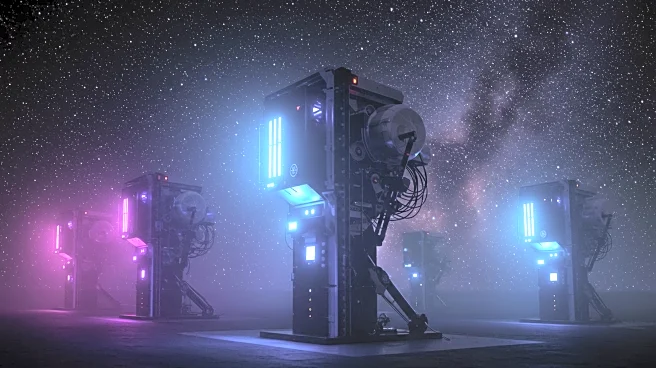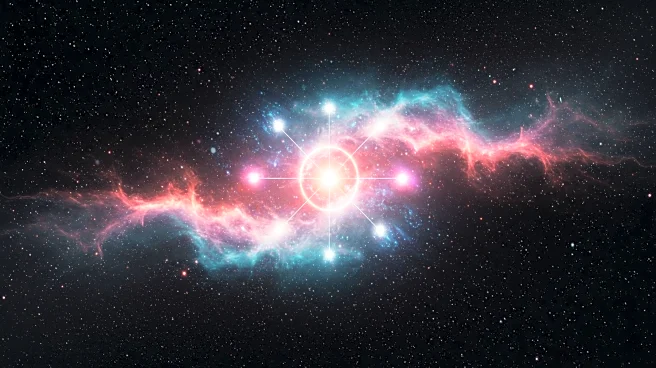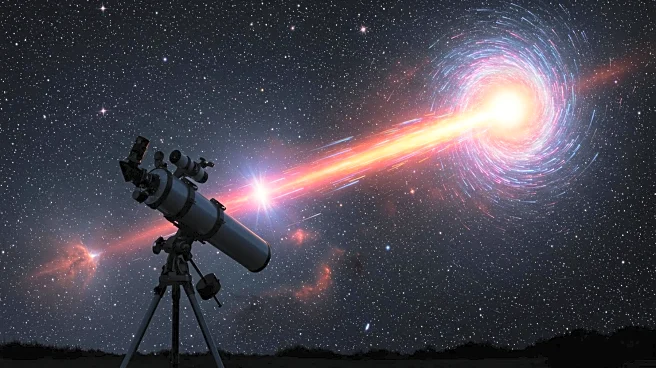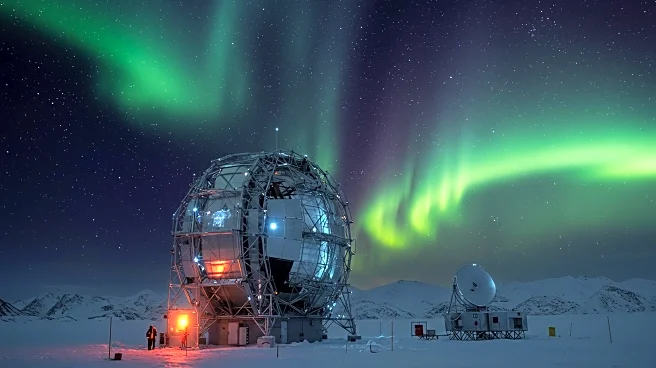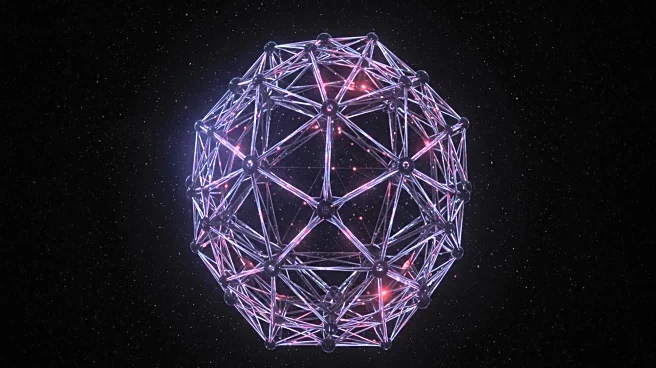What's Happening?
A cosmic neutrino with an unprecedented energy level of 220 petaelectronvolts (PeV) has been detected by the KM3NeT detector under the Mediterranean Sea. This detection surpasses the previous record of 10 PeV and confirms the presence of a real particle rather than a glitch. The neutrino, designated KM3-230213A, was identified through a detailed analysis of data, which ruled out errors and supported the conclusion of its high-energy nature.
Why It's Important?
This discovery marks a significant advancement in neutrino astronomy, providing insights into the most extreme objects in the universe. Neutrinos, often called 'ghost particles' due to their elusive nature, are crucial for understanding cosmic phenomena. The detection of such a high-energy neutrino opens new avenues for research into the origins and behavior of these particles, potentially revealing unknown astrophysical processes and contributing to our understanding of the universe's most energetic events.
What's Next?
Researchers are working to trace the origin of KM3-230213A, which could lead to the identification of new astrophysical sources or processes. Further analysis and collaboration with other neutrino detectors like IceCube and Pierre Auger will help refine the understanding of ultra-high-energy neutrinos. This ongoing research may uncover new components of the cosmic neutrino spectrum, enhancing our knowledge of the universe's fundamental forces and particles.
